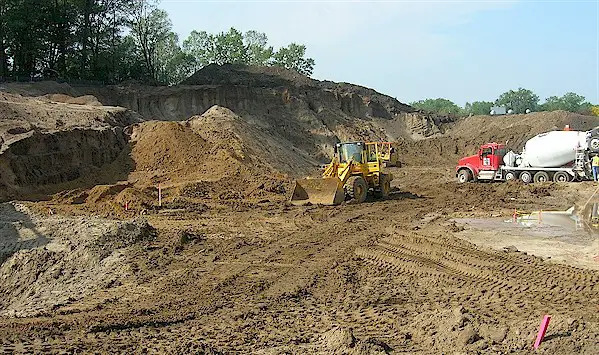The effects of soil erosion in construction go beyond land degradation. Similarly, all construction activities are susceptible to pollution dangers of soil erosion and sediment. This means that if not well-managed, soil erosion can cause irreversible damage to the land and property.
In addition to triggering environmental issues through sediment run-off that affects nearby streams, storm drains, and other water bodies, stormwater erosion can create significant safety and health concerns for construction workers and other site occupants. Additionally, overlooking the importance of a thoughtfully-devised erosion control strategy can cause dire financial implication in terms of litigation as well as fines related to potential building code violations.
What’s more, construction companies are both the victim and the perpetrator in conversations of soil erosion. Various construction activities can cause topsoil loss, which has the highest organic matter, plant nutrients, and biological activity. The loss of the upper layer often reduces the soil’s ability to regulate water flow, combat diseases, and provide essential nutrients.
On the same note, the impacts of construction activities can cause significant environmental and economic effects, including excess sediment and excess nutrients, affecting water quality. Considering soil erosion’s adverse effects, all construction professionals should do their due diligence to mitigate soil erosion. More importantly, it’s critical to work in tandem with local experts like Granite Seed who can provide erosion control solutions like wattles, mulch, and erosion control blankets.
Types of Erosion
Soil erosion occurs as a result of many factors. Observing careful erosion control measures is essential. However, it is also critical for construction workers to familiarize themselves with common types of erosion before executing their erosion control strategy.
Soil erosion is a process that involves the displacement of the soil’s upper layer through wind and splash erosion. There are two major types of soil erosion, wind erosion and water erosion. Wind erosion usually occurs at the surface of dry land. A perfect example of severe wind erosion is sand dunes. Typically, surfaces caused by wind erosion are more vulnerable to water erosion.
Water erosion starts at the surface where the first layer of ground cover or vegetation is washed away, and the water penetrates deeper into the ground. In severe cases, water run-off can cause deep channels and stream erosion, leading to land displacement.
On-site Impacts of Soil Erosion
The use of heavy machinery or erosion by water or wind causes on-site soil damage. These activities lead to topsoil loss, which contains the essential components (plant nutrients, organic matter, and biological activity ) of healthy soil.
Moreover, the loss of topsoil eliminates the soil’s functionality. It removes the soil’s nutrient holding capacity leading to a less fertile environment for landscape plants. Finer soil particles and organic matter that facilitate soil fertility are eliminated, leaving more extensive and less reactive particles like gravel and sand.
Similarly, the loss of organic matter leads to compaction, which reduces the water holding capacity and lowers infiltration rates, resulting in low growth in gardens, trees, flowerbeds, shrubs, and lawns. It also makes the site more vulnerable to drought, which demands regular watering.
Additionally, organic matter provides food for beneficial insects and microorganisms. Thus, its loss reduces the soil’s ability to control pest outbreaks, which increases reliance on pesticides.
Off-site Impacts of Soil Erosion
Construction activities can also cause off-site economic and environmental impacts. This typically causes two significant concerns regarding drainage ways and surface water, including excessive water and sediment. These extensively impact the biological and health diversities of water bodies.
Sediment often reduces water quality by increasing turbidity, preventing sunlight penetration, which reduces underwater vegetation and photosynthesis. Similarly, excessive nutrients lead to eutrophication, which is a process that involves biological growth caused by excessive phosphorus and nitrogen.
Soil Stabilization Best Practices
The best thing is that there are several soil stabilization practices to help reduce soil erosion and sediment. Construction workers should aim to schedule excavation during low-rain seasons and cover the disturbed soil with mulch as soon as possible.
Another way to reduce the impact of construction activities on the ground is by creating smaller project phases. Windbreaker installation can also be appropriate in areas experiencing wind erosion. On the other hand, soil compaction can be avoided by limiting heavy equipment and trucks. You should also inspect and keep any structural control practices.
Conclusion
While construction-project-induced soil erosion is a necessary evil, contractors and construction workers should do their due diligence to mitigate damage whenever possible. Failure to do so may result in hefty fines or unforeseen project delays, both of which can monopolize precious financial resources. Remember, prevention is preferred over post-project damage control.
